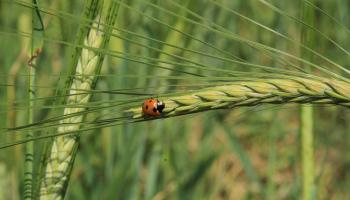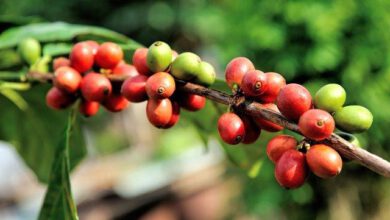The advantages of using nitrification inhibitors when fertilizing winter cereals with nitrogen
A variety of fertilizer application methods are available...
Yaron Yutal, Chief agronomist ,Gat Fertilizers

the most efficient application of nitrogenous fertilizer is an issue, which arises year after year. nitrogen demand varies with crop type and its potential yield.
soil residual nitrogen from previous growing seasons must be taken into account when deciding about the rate of nitrogenous fertilizer to apply.
usually, the recommended rate of elemental nitrogen (n) for wheat following a cereal crop ranges from 90 to-100 kg nitrogen (n) per hectare; for wheat after a leguminous crop from 70 to 80 kg nitrogen (n) per hectare; for wheat after irrigated and fertilized crops or fields fertilized with manure or compost, 50 to 60 kg (n) per hectare.
a variety of fertilizer application methods are available to the farmer to supply the required amount of nitrogen.
according to one method, the total amount of required nitrogen is applied prior to planting the crop. solid urea is spread, or a urea solution or urean is sprayed and then incorporated into the soil by harrowing with a disk or tilling to a depth of about 20 cm.
this rate of nitrogen will be sufficient to feed the crop during the entire growing season when rainfall is moderate.
however, additional fertilization during the crop’s growth is generally required to supplement nitrogen when heavy rains wash the nitrogen down, below the rooting depth of the crop. furthermore, a lack of aeration in the soil can occur due to prolonged rainy days and the resulting denitrification process, during which nitrates in the ground are transformed into volatile nitrogenous compounds due to anaerobic conditions and bacterial activity.
it is possible to reduce this loss of nitrogen by the application of nitrification inhibitors, thereby saving on supplementary nitrogen fertilization during the crop’s growth.
a description of the nitrogen cycle in the soil, starting at the moment nitrogen is applied, can help in understanding how a nitrification inhibitor works. this cycle is outlined in the diagram below.
pre-plant nitrogen applied as urea or ammonium sulfate does not undergo any process until wetted by rain or when irrigation is applied to germinate the crop.
once the soil is wet, solid urea fertilizer dissolves and a urease enzyme present in the soil turns urea into ammonium within 24 hours.
ammonium ions (nh4+) (originating both from urea and ammonium sulfate) attach immediately to the clay minerals in the soil (moderate, light and heavy soils). the ammonium attached to the clay is almost immobile in the ground even when heavy sprinkler irrigation rates are applied.
soil residing bacteria oxidize the ammonium ions in the soil into nitrite (no2-) and later into nitrate (nh3-).
the rate of this microbial process depends on soil temperature: at 30 degrees centigrade, it takes a few days but it gets slower at the lower winter temperatures, possibly taking more than a month.
during this process the charge on the nitrogen ion changes from positive (in ammonia) to negative (in nitrate), thus making nitrogen very mobile in the soil. precipitation or irrigation washes the nitrate down to the wetting front, deep in the ground, below the rooting depth of the crop.
the role played by rain in the efficiency of nitrogenous fertilizer must be considered in order to understand the impact of the nitrification inhibitor.
the season’s first rains in october or early november (in a mediterranean climate), after the fertilizer has been applied and incorporated into the soil, but before the seeds have been sown and soil temperatures are still high, facilitate the nitrification process, which converts ammonia into nitrate.
later rains drive the nitrate deep into the ground so that during germination most of this nitrogen is already unavailable to the crop’s roots.
the addition of a nitrification inhibitor delays this bacterial activity, leaving ammonia attached to the soil for a longer time in the upper soil layer where it is available to the roots of germinating seeds. later in winter, soil temperatures drop and the nitrification process naturally slows down, leaving most of the fertilizer’s nitrogen in the upper soil layer where root activity is maximal.
the nitrification inhibitor maintains nitrate at a low concentration and further reduces potential losses of nitrogen due to denitrification when rainy periods are continuous.
when a nitrification inhibitor is added to the pre-plant nitrogen fertilizer (as outlined above), the application of nitrogen fertilizer at the 5-6 leaves stage, which frequently is required to offset the loss of nitrogen after nitrates are washed down or when denitrification processes prevail, may be saved.
gat fertilizers is introducing the use of nitrification inhibitors mixed with its nitrogen fertilizers in order to delay microbial nitrification in the soil thus slowing down the transformation of ammonia into nitrate.
the inhibitor is soluble and mobile; therefore it is most suitable for combining with urean or with liquid fertilizers containing urea.
it neither acts as a poison nor kills off the bacteria, but hinders their activity, thereby postponing nitrification for a period of 25-55 days, depending on prevailing temperatures.
the material is available pre-mixed with a liquid fertilizer, ready for use. the type of nitrogen fertilizer and its concentration in the solution determine the required concentration of the inhibitor.
expert agronomists at gat fertilizers are available for guidance and assistance in planning an optimal fertilization program, in accordance with the crop’s demands and the site’s conditions.
for more information, please contuct yaron@deshengat.co.il




